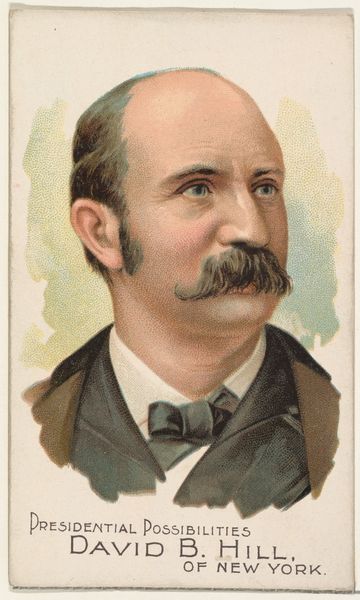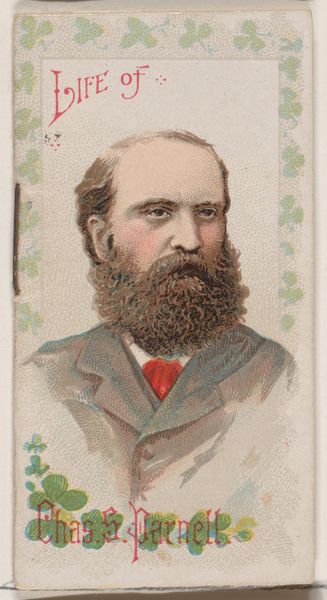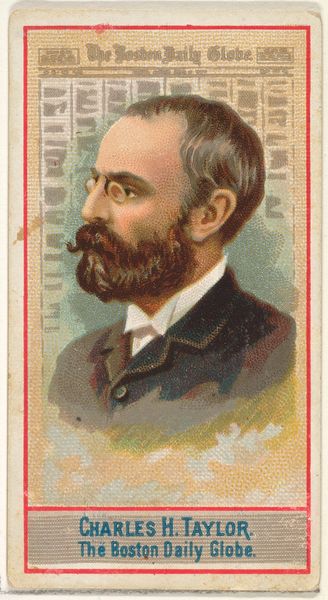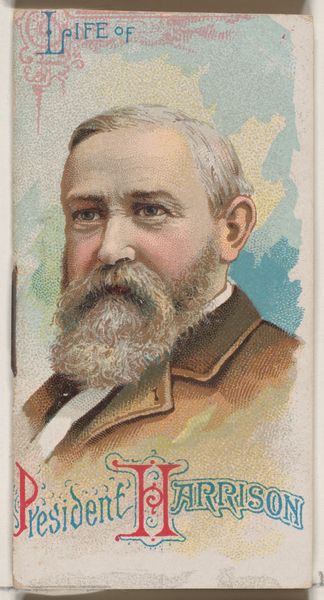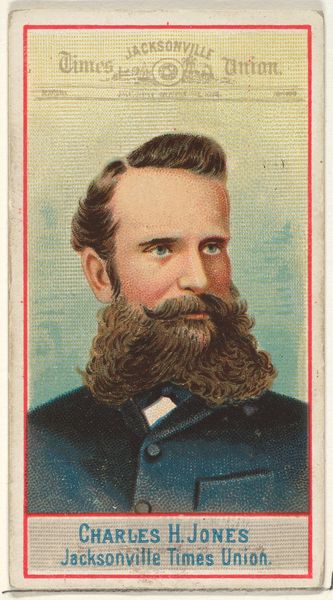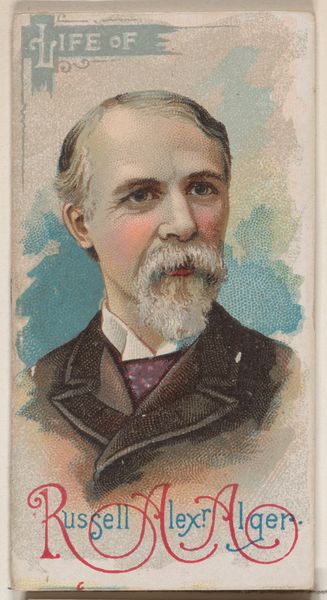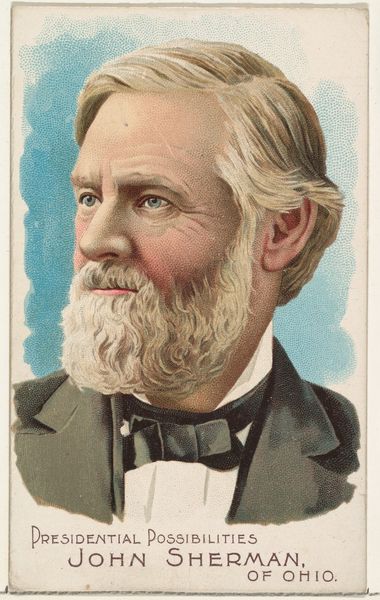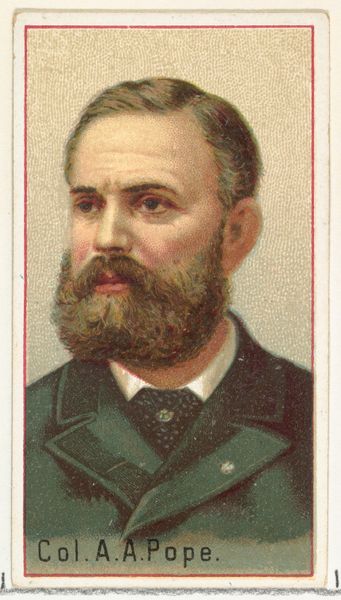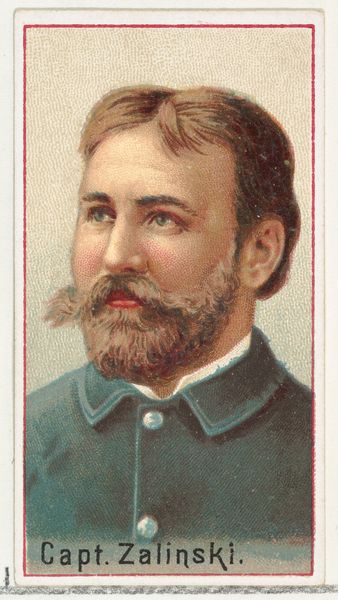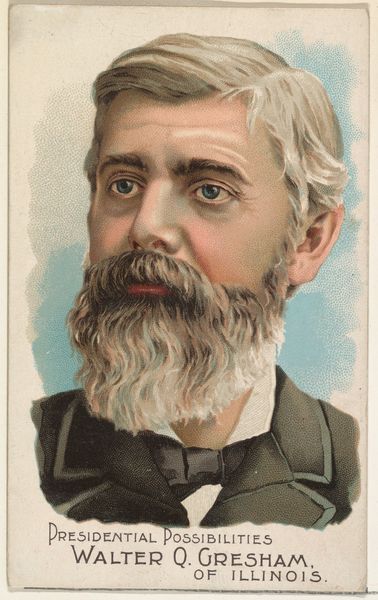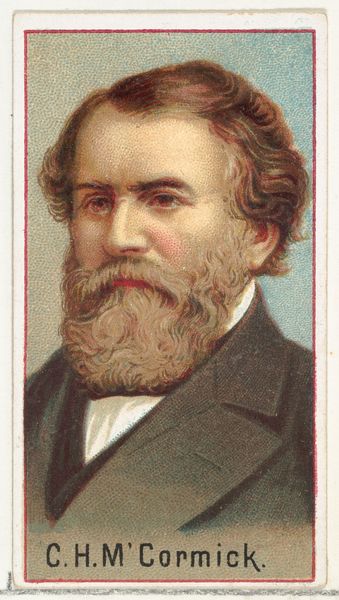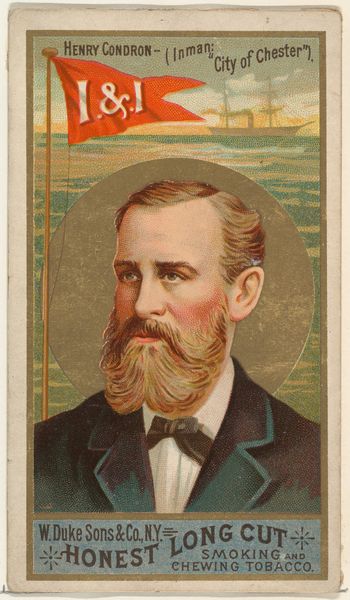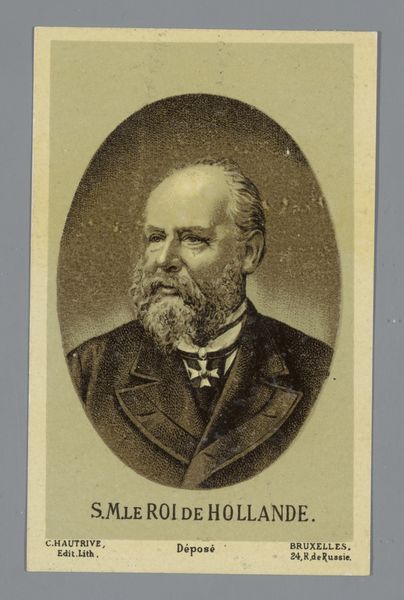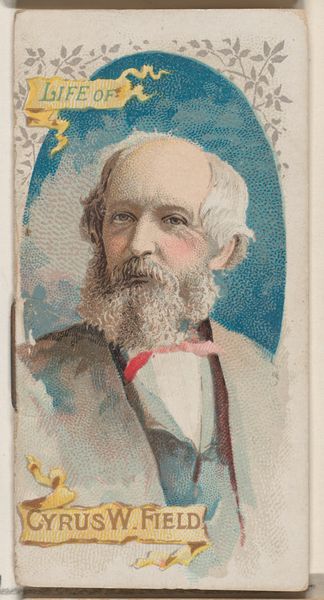
History of Jay Gould, from the Histories of Poor Boys and Famous People series of booklets (N79) for Duke brand cigarettes 1888
0:00
0:00
drawing, lithograph, print
#
portrait
#
drawing
#
lithograph
# print
#
oil painting
Dimensions: Overall (Booklet closed): 2 3/4 × 1 1/2 in. (7 × 3.8 cm) Overall (Booklet open): 2 3/4 × 2 7/8 in. (7 × 7.3 cm)
Copyright: Public Domain
Curator: Here we have an 1888 lithograph titled "History of Jay Gould," part of the "Histories of Poor Boys and Famous People" series by W. Duke, Sons & Co., originally found within cigarette packets. Editor: Instantly, I get this gilded-age vibe. There's something about the composition and slightly off-kilter symmetry that suggests a rags-to-riches narrative, varnished and repackaged. What’s striking to you about it? Curator: What interests me are the production processes. The use of lithography would allow Duke to mass-produce these images at scale. And that places this artwork within the framework of tobacco capitalism and the burgeoning advertising industry. The portraits became a form of currency, redeemable through trade or simply collectible. Editor: That's fascinating – so a byproduct almost takes on this art status. Looking at Gould himself, it's a carefully constructed image of success. A certain stoicism conveyed. The man knew how to curate his public image. But there's a sense of anxiety, don't you think? Perhaps knowing success comes with the constant fear of losing everything. Curator: The materiality of it also fascinates me. These were printed on relatively cheap paper, probably handled frequently and disposed of once the cigarettes were consumed. So their survival speaks to our shifting valuations of what counts as art. Now, we can view it at the Metropolitan Museum of Art. Editor: Right, this ephemeral object elevated! And perhaps speaks to our continuing obsession with wealth, success, the narratives we craft and consume around powerful figures. There’s an uncomfortable question hanging about these small pictures. Curator: Precisely. By understanding the labor, materials, and consumption tied to such seemingly simple artifacts, we gain insights into the structures shaping even our desires. Editor: Thanks for offering this way of approaching the image. The backstory absolutely shapes how one sees this image. Curator: Indeed. It transforms our reading of both Gould himself and our present relationship to commerce.
Comments
No comments
Be the first to comment and join the conversation on the ultimate creative platform.
